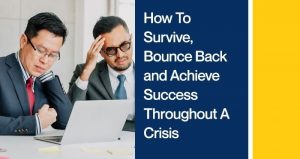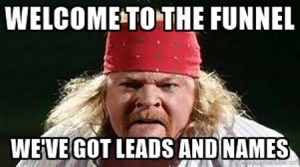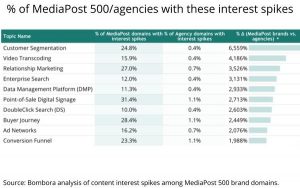— September 9, 2017
On-Page SEO is one of the most important aspects of a thorough and successful Search Engine Optimization.
However, as the years go by and Google alters its algorithms, things change, new techniques are created, new ideas shared and that means only one thing…
It’s time for an On-Page SEO Roundup containing the very best practices you MUST go for in the end of 2017!
I posed a query to numerous SEO Experts and they responded, giving us surprising, insightful and actionable tips that must be shared with the SEO world!
I was able to gather answers from diverse actors of the SEO realm. While some of them may share similar insights, it’s imperative that you read them all thoroughly and make sure you implement these amazing SEO ideas as soon as possible!
Ready for the SEO Roundup to beat them all?
Read up now!
#1. Clark Benson

CEO/Founder of Ranker
“At Ranker, we’ve had quite a bit of growth in organic search over the years, particularly on mid-and-long tail search queries. As someone who likes to rank things, I would have to say the single most important element of on-page search for us, to this day, has been writing smart, search-optimized, title tags.
One of the things we did poorly in the very early stages and adjusted to better effect later was that we tried to go after really high-competition keywords in our title tags. For example, on our ranking of zombie movies, we would look in the Google Keyword Tool and see that “zombie movies” showed far more searches than “best zombie movies” or “zombie movies list”, so we would write a clunky title tag like “Zombie Movies – List of the Best”.
After a while we saw the failings of this “rookie mistake” approach and switched to something more natural sounding like “Best Zombie Movies, Ranked By Fans”. Trying to win on a very highly searched term takes years, but you can get solid traffic from mid and long-tail title tags that are more closely geared to exactly what your page is.”
#2. Sam Hurley

Managing Director at OPTIM-EYEZ
“There are 101 on-page techniques to implement for maximum organic visibility. One of the priorities today is the use of semantics/LSI keywords.
LSI is your ranking fuel. If you’re not already thinking this way when creating your content, now is the time to begin!
Are you aiming to rank for “Best summer days out”?
Apply an abundance of conversational and topical phrases, such as:
-Things to do in the sun
-Where to go in the sunshine
-Top hot tourist attractions
-Nice weather but bored
LSI keywords are so powerful, Google results occasionally appear that don’t even include the original search query!”
#3. David Klein

David Klein, Director of Marketing at ClickTime
“1. Optimize your title tags for both search and conversion. Changing your title tag will offer the biggest improvement to your page rank. Yes, you’ll want to want to include your most important keyword in the title tag, but you’ll also need to consider the most effective language to market your website. Title tags show up in Google search results, which means that you have an opportunity to highlight your unique selling proposition before a potential lead or partner visits your site!
2. Use Google Related Search to find additional keywords to include on your page. Sprinkling your target keyword on your page is no longer enough. To take the next step, type your keyword into Google, scroll down, and find the related keyword that Google lists. Add these words to the copy on your page, and watch your rank improve!
3. Reduce image sizes. Page speed is a critical component of modern SEO. One of the easiest ways to increase page speed is to reduce the size of any images on the page. This can be done for free with sites like resizeimage.net or through most Adobe or image editing software.”
#4. Kent Lewis

Kent Lewis, President and Founder of Anvil Media
“As a career SEO professional who optimized his first website in 1996 and has been running award-winning agencies ever since, I have a few thoughts on on-page SEO best practices for 2017.
Mark it up!
When it comes to website HTML code optimization best practices, incorporating structured data is perhaps the least utilized and most effective technique missing from today’s SEO arsenal. While many marketers incorporate keywords where it matters most – title & header tags, anchor text and file names – they are missing the boat with schema markup.
Schema markup or rich snippets help Google and other search engines understand both content and context. This is particularly useful for e-commerce product pages, and location-based information like addresses and phone numbers. For a full list of structured markup options, visit Schema.org.”
#5. Stephen Seifert

Stephen Seifert, SEO Manager at Day Translations, Inc
“My top SEO tip is to optimize for Google Featured Snippets. There is nothing better than ranking position zero, atop all your competitors in SERPs. By utilizing a few on-page optimization techniques geared for Google Featured Snippets you get present and future SEO benefits.
The immediate benefits is that you or your clients will rank position zero with content showcased by the number one search engine in the world. The long term benefit is that by optimizing for snippets, you are also optimizing for voice search as well. Voice Search Optimization is regarded as the future of search as mobile and machine learning processes begin revolutionizing the way people interact online.
Google Featured Snippets simply answer question-based queries, and many voice searches are in fact question-based queries. So how do you optimize for featured snippets? First, find a question your audience will search for, or want answers for. Next, put your title or subheading, the question, in an H1, H2, or H3 tag. Next, ensure you have 40 to 50 words below your header tag that answers the question. Bullet points, lists, steps, and tables are also great for landing feature snippets.”
#6. Marc Nashaat

Marc Nashaat, Toronto SEO Expert & Digital PR Consultant at MarcNashaat.com
“Here are some of the on-page factors that I think will be most important for 2017.
Schema Markup and Rich-Data – there is a multitude of evidence that suggests that rich snippet features continue to rise in search results. With the growth of voice-search now it’s more important than ever that webmasters are systematically classifying all of the information on a page for these bots to easily discover and display. Whether it’s a list, FAQ, event, entity, etc there are myriad opportunities for webmasters to capitalize on by ensuring their content is rich-snippet ready.
Mobile friendliness and Page Speed – this one is a no-brainer. Mobile adoption is now essentially complete and much of global web traffic takes place via mobile. Google recently announced the mobile-first index and whether you consider the mobile friendly tags or the launch of AMP it’s become increasingly clear that Google favors pages that are quick to load, and cross-compatible.
Secured Pages – starting in October, Google will be showing a non-secured warning to all users who visit http pages that capture form fields. As a general rule of thumb, everyone should be using an SSL certificate in 2017 and beyond. Not only is this likely to become a future ranking factor, it’s just good business.”
#7. Natasa Djukanovic

Natasa Djukanovic, CMO at .ME
“While having the right keywords embedded in your site is important to SEO, Natasa believes that there are other important factors that makes a huge impact on your website’s ranking. In fact, she and the .ME team developed 5 integral tips on how to optimize your website to improve your SEO ranking, which include:
- Include titles and descriptions for your images: it’s not just the website content that should be optimized for search engines — your images should be too. Always include a title and Alt description for your images. Search engines scan all the information they can get, and you don’t want to miss out on additional SEO opportunities. By including this information in your images, it makes it easier for people searching a particular topic to find your site.
- Choose quality links: be cognizant of the amount of backlinks you use on your site as well as their strength and authority. If you link to reputable sites and trusted sources, Google will likely align your site with these brands and you can earn yourself some major trust points. However, only include a link where it’s purposeful and don’t overdo it – avoid pushing more than two links per 200 words.
- Create short and unique webpage descriptions: descriptions are important both for search engines and those surfing the web, as this is what populates search engine results. By entering meta descriptions manually for each web page, you can impact and influence what is shown in search results and increase the chances of your website being clicked. Develop different descriptions for different pages between 150 and 160 characters long – anything longer than that will be truncated by the search engines – which will help expose yourself to a wider audience.
- Choose the perfect domain name: there’s been a long, back-and-forth debate on whether or not adding keywords to your domain name improves your SEO ranking. The fact is, keywords in domains can help improve SEO as they can increase your Click-Through Rate, when used correctly. Most users are likely to click on keyword domains, as they clearly indicate what the website is about, but there are a few things every website owner should keep in mind: make sure to keep keywords in your domain logical and related to your business and avoid keyword stuffing.
- Leverage social media: it’s no surprise that social media can help you reach new audiences and maintain existing relationships, but a little known fact is that social media profiles can help with SEO too. Search engines analyze social signals to differentiate low-quality sites from those that are valuable and focus on providing educational and engaging content. Website owners should include social media sharing buttons on their site or as a sidebar to drive more traffic to their site, which will increase their SEO ranking.”
#8. Kameron Jenkins

Kameron Jenkins, VP SEO & Content Strategy at Scorpion
“If you already have a site, you’re likely sitting on a goldmine of data that can help you make the smartest on-page optimization decisions. Use your site’s Google Analytics data to identify high-performing pages.
For example, look for pages with the highest organic traffic or the highest time on page. Analyze those pages and list out their defining characteristics. How long are they? What types of topics do they cover? How is the content formatted?
Once you know the characteristics of your highest-performing pages, make more pages like them! Chances are, what drew people to your existing pages, when emulated, will draw visitors to your new pages. On the flip side, use that same data to identify your site’s lowest-performing pages so you can improve them, NoIndex them, or delete them.
If you’re just starting out, you probably don’t have much, if any, data to work with. That’s okay! Some of my favorite on-page optimization ideas don’t involve opening Google Analytics at all. For example, take your page topic and pop it into a free tool like Answer the Public. Depending on how broad your topic is, you could get hundreds of keyword ideas for your page.
You could also use Google’s suggested search, the “people also ask” boxes, and “searches related to…” at the bottom of the SERPs to get ideas of words and phrases that Google finds relevant to your topic.
Remember: Google wants to serve up the most relevant pages to searchers, so focus on what your users will find helpful and the rest will follow!”
#9. Kendall Brennan

Ally Kern, Outreach Manager at Digital Third Coast
“Keyword Variance in Copy: describe your topic in every way imaginable. From the way it looks, to how it affects its environment, etc. Descriptive adjectives allow Google’s contextual algorithm to get a strong idea of what your page is useful for. The content needs to be as descriptive as possible.
Research Search Query before finalizing keyword: type the keyword you want into Google, like someone who is searching for the keyword would. Check the search results and compare your page and what Google is returning. If your page does not offer the same service as the results returned, that keyword is not the best choice.
Header Structure for Topic Modeling: using an intelligent header structure (h1, h2, and h3) to create a topic model and target other related keyword topics is key.
User Experience: user experience is paramount to what the content reads as. Quality, in terms of readability and relevance, has become more and more of a primary factor here.
Creating content based on a Search Query you want to rank for: keeping the topic/theme of the page focused and consistent throughout the whole page. Keeping the focus relevant to the main topic through the title, description, H1, content. Healthy Dog Food is the search query. Write a piece whose sole purpose is to talk about healthy dog food.
Internal Linking: internal linking to other pages by utilizing targeted anchor text that supports the theme/topic of the page. Internal Links push authority throughout your website. Create them to help Google share page authority within your site.”
#10. Bill Rowland

Bill Rowland, SEO Director at Trinity Insight
“Solid on-page optimization requires a solid, well thought-through process that can be applied across a website. Typically, we focus on pages that can realistically compete for a productive keyword theme. This can vary, based on the type of website: e-commerce, content, B2B, lead generation, etc.
Our process includes:
- Page Review
- Keyword Research
- Assess Current Performance
- Find Gaps/Omissions
- Title Tag
- Meta Description
- Headings (H1-H3)
- Supporting Copy
- Image Optimization
- Content Creation
While in concept this is a simple process, it can quickly get complicated based on the limitations of any website so the devil is truly in the details.”
#11. Zac Johnson

Zac Johnson, Founder of Blogging.org
“To get the most out of my ON-Page SEO efforts, I always try and analyze the competition before writing an article and going live with it. The goal here is to not only see what is currently ranking well and why, but also how you can make your own content better.
Once you have this foundation in place, it will be easier for you to format your content, which will also improve your chances for ranking and get social and link promotion from other quality resources as well.
A perfect example of this would be if you were trying to rank for a “how to” article. This is usually quite competitive, but there are still many ways to outrank the competition with better content and promotion. If a top ranking article only has text and images, this means you should create a resource with more text information, images and also create an original video or infographic to compliment your content as well. This will also help with citations on other sites and social reach as well.
With all of this in place, it will be much easier for you to have an outreach process that yields better results. Perform a link and SEO analysis on all competing sites and see where they are getting their links from. Then reach out to these same sites and show them you have a better and more updated resource for them to link to.
Yes, it’s a long and tiresome process, but one that works quite well.”
#12. Scott Litvack

Scott Litvack, Director of Organic Search at Wpromote
“My list of top factors would include:
- Quality Content – having relevant and engaging content is the most important on-page factor. Creating pages that conform to Google’s E-A-T (Expertise, Authority and Trust) guidelines is critical to SEO success.
- Page Speed – Google has really been emphasizing quick loading time and it is one of the most important factors, indeed
- Crawl-ability – if the crawlers can’t access the pages properly, then they won’t be able to index your content. Having a clean URL, a correct error handling, and canonicalization helps significantly
- Mobile/Responsiveness – ensuring your site is mobile-compliant, with Google in the process of rolling out the mobile first index
- Title tags – this is still one of the most important factors. Getting these written correctly is important
- HTTPS – this is becoming increasingly important with the majority of top 10 results for many queries being HTTPS”
#13. Srish Agrawal

Srish Agrawal, Founder of Logo Design Team
“When trying to improve search rankings and placement, ON-SITE SEO is key to move ahead of the competition. One of the main reasons for this is that most sites are always focusing on their OFF-SITE SEO more than anything. This includes everything from social media, content promotion and link building. While these components are all important, if you focus on the SEO that can be improved through your on-site efforts, you will be even better off.
A few examples of what has been working very well for us has been to focus on much longer site content (usually, more than 1,500 words per post), while also using targeted keywords and long tail phrases within our titles.
Just as important as keywords and text content, is the breaking apart of content within your articles and any additional images, graphics, infographics or data references that you can include as well. For the most part, the more improved and better your content is over the competition, the more likely you are to outrank them (if you have the necessary DA/PA rankings).
Once all of this is in place, one more recommendation I have is to check what keywords your content is ranking for. Analyze not just what keywords you are ranking for, but also where.
If you have content that is ranking in between 10-40 on Google, it shouldn’t be hard for you to add some new content to your articles to continually improve your rankings. With your site already ranking in the first few pages of Google, it’s usually a much easier process to move up the ladder for long tail keywords than going after higher-competition based keywords. Of course, OFF-SITE SEO efforts will also help with this process as well.”
#14. Timmy Griffin

Timmy Griffin, SEO Manager at Fantastic Pest Control
“Here are my thoughts on some of the best on-site practices in 2017.
- Serve the searcher’s intent. If you succeed in doing so, your page will start ranking for more keywords, some of which you weren’t aware existed. That is a result from Google’s semantic core, which will deem the page (if not the website) relevant to a particular topic. From which point on your site will rank for various types of keywords.
- Providing the searcher with the necessary information could mean that you will rank for informational queries. This on its own can lead you more traffic and offer ideas how to pursue even more content.
- A vital SEO on-site aspect is landing page optimization and to have a clear user path for visitors to follow. This path is what the visitor needs to do (interact with) so you can convert them into customers. The clearer and simpler the goal is the easier it will be for the visitor.”
#15. Tyler Sickmeyer

Tyler Sickmeyer, CEO at Fidelitas Development
“Compress images and video for faster load times. Speed is everything, especially as more and more search traffic comes via mobile devices. Compressing large files can shave seconds off of slow load times, providing a better user experience and lower bounce rate – the boost in the search rankings is icing on the cake.
Build your site with a mobile-first focus. “Responsive” sites are a thing of the past. Now, sites must be built with the mobile user in mind as the primary user of the site. Optimizing content and site navigation for mobile devices (hint: the fewer drop-down menus, the better) will lead to longer time on site and lower bounce rates for better positioning in the search rankings.
Install an SSL certificate. This is a big one – Google is informing webmasters large and small that Google Chrome, the most popular browser, will begin marking sites that lack an SSL certificate as “non-secure.” Sites that don’t take the time to add an SSL certificate will see their bounce rates spike in the coming months.”
#16. Bryan Clayton

Bryan Clayton, CEO at GreenPal
“Getting traffic for a new site and competing with establishing incumbents can be daunting. However, with Google’s new tweak to their algorithm, highly-targeted new sites with quality copy can get a leg up on the established high authority players.
This is because Google is rewarding and ranking sites higher that have a higher time spent on page metric.
If your average time spent on site is 3 or 4 minutes versus your competitors that may have less than 1 minute, Google will reward your page by pushing you higher up in the search engine results page.
The way new site owners can accomplish this is with highly targeted landing pages with engaging copy broken up with what are known as “Bucket Brigades.”
With the bucket brigade tactic, you can keep your visitors on page longer by breaking up the copy every two or three sentences or sub head phrases such as these
- Here’s the deal
- Why does this matter
- What’s the catch
- How can this help you
- The best part
That will captivate the attention of your readers and psychologically drive them down the page, reading more of your copy and keeping them on your site longer.
This will increase your chances of conversion while pushing you up higher in the search engine results page.
It’s a win-win.”
#17. Nishan Singh

Nishan Singh, Online Marketing Consultant at NishanSingh.ca
“Use search console as your best tool in your arsenal. Search console gives you an analysis of what search engines think of the content on your website. Check for site indexability, AMP issues, Mobile page issues, broken internal links (404 errors), and implement structured data through Data Highlighter.
Be selective with what you are writing about. Choose your keywords wisely. You can use tools like Moz Bar to find keyword difficulty and identify what other domains are ranking for those keywords. Check authority of the already ranking content and see if you can write better quality content, get higher quality links and generate more social engagement than the already ranking pages. If you can, then go ahead. Otherwise, choose more long-tail keywords.
Think “voice typing”. This makes long-tail keywords focus even more important. Instead of someone searching ‘physiotherapist in Mississauga”, expect searches like “what physio clinics are near to me”, etc.”
#18. Ally Kern

Ally Kern, Outreach Manager at Digital Third Coast
“When onboarding a client, we do a thorough technical audit to ensure that their website follows all SEO best practices. The 2 areas that we really focus on when we audit a site are:
Site Speed – we have attention spans that are shorter than a goldfish’s. If a website doesn’t load quickly, users will bounce and go to another site. When this happens, and a searcher goes back to the main SERPs and clicks on a site below yours, it’s called pogo sticking. This can have seriously negative ramifications on your website. The main areas to improve site speed include:
- Compressing images
- Leveraging browser caching for repeat visitors
Ensure server response time is under .2 seconds
Defer parsing of any JS files that aren’t needed for rendering until after the initial page load
Remove any redirect chains, so that any old URLs only have one (1) 301 redirect to the new version
Canonicalization – a canonical tag tells Google which version of a URL you want to have indexed in a website. Far too often, we see clients that have erroneous canonical tags, which can lead to improper indexation. Here are 3 areas where we see canonical tags set up incorrectly:
- HTTPs migration – when someone migrates over to HTTPs URLs, it’s important to update all title tags to HTTPs as well! Otherwise, you’re signaling to Google that you want the non-secure versions of the URL to get indexed.
- Dynamic URLs – when you can search by the number of results on a page, or by price low to high, a dynamic URL is generated. If it doesn’t have a canonical tag pointing to the clean, absolute version of the URL, that dynamic URL can get indexed. This can lead to a duplicate content issue, since the content will be near identical and living on 2 URLs.
- “If you have similar, or near duplicate content that lives on 2 different URLs, it’s important that both pages have a canonical tag pointing to just 1 version of the URL”
Digital & Social Articles on Business 2 Community
(100)








